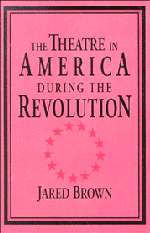SETTING THE STAGE: BEFORE THE REVOLUTION
Published online by Cambridge University Press: 29 September 2009
Summary
America was ready to explode. The hated Stamp Act of 1765, the Royal Proclamation closing the lands west of the Alleghenies to immigration, the Sugar Act, and taxes on tea, paper, glass, and paint had all led to boycotts and riots in the colonies. Royal governors representing George III had become detested symbols of oppression. The Virginia Resolves stated defiantly that only Virginians could tax Virginians – and other colonies, quick to indicate their agreement with that revolutionary sentiment, denied the British their historic prerogative to impose taxes.
George III could not countenance, however, any defiance of his – or his ministers' – will. The Americans must be made to obey, he believed, by force if necessary. Anything short of total obedience represented a direct threat to the monarchy. More was at stake than the continued subjugation of the American colonies. If America resisted British authority, might not Ireland do so as well?
Divided British public opinion was becoming increasingly anti-American. The colonial boycott of British goods could wreak havoc with British commerce. The Boston Tea Party was only a foretaste of what might occur if the Americans were not put swiftly in their place.
The causes of the imminent war were manifold, of course, but overriding all was the British failure to understand that “a new spirit had arisen in the colonies.”
- Type
- Chapter
- Information
- The Theatre in America during the Revolution , pp. 9 - 10Publisher: Cambridge University PressPrint publication year: 1995



